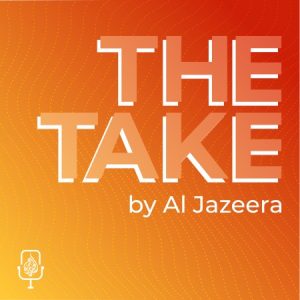
“I don’t know how it ends, but when brave people stand up for what they believe in, you have to be inspired,” says former US Ambassador Michael McFaul, in response to women protesting in Iran.
Peaceful protest is a universal human right as defined by the United Nations and yet, governments often respond to citizen protest quite harshly. To lend clarity around the expectations of citizen and government actions, the United Nations produced a multi-page document in 2020 outlining specifics of this universal right. It states that peaceable assembly “may take many forms, including demonstrations, protests, meetings, processions, rallies, sit-ins, candlelit vigils and flash mobs.” It adds that assembly is protected by the Universal Declaration of Human Rights regardless of “whether they are stationary, such as pickets, or mobile, such as processions or marches.”
Currently, the world is watching as Iranian and Russian officials crack down on demonstrations. An American nonprofit organization dedicated to the support and defense of democracy, Freedom House, has published their Global Freedom Status analysis in which they assigned Iran a score of 14 and Russia a score of 19 out of 100 last year. According to the analysis, both countries are decidedly “Not Free” based on political rights and civil liberties, and they are far from alone in that designation. When Russian police started detaining anti-war demonstrators, Ms. Shamdasani of the UN Human Rights Organization issued a reminder: “We stress that arresting people solely for exercising their rights of peaceful assembly and freedom of expression constitutes an arbitrary deprivation of liberty.”
In Iran, women are cutting their hair and removing or even burning their headscarves in order to express anger at their government’s morality police, known as the Guidance Patrol. The catalyst for this new wave of Iranian resistance was the death of a young woman arrested for not covering her hair adequately; 22-year-old Mahsa Amini was dragged away from her brother for a ‘re-education’, and the next time he saw her she was in a coma. When she died on September 16, 2022, protests erupted. The government quickly restricted Twitter, WhatsApp, and reduced internet access. Even with these communication blockades, word spread, videos leaked, and people in cities around the world are now demonstrating in solidarity with the women in Iran, chanting “Woman, life, freedom!” Many Iranian women have shared their own stories of run-ins with the Guidance Patrol and the treatment they received. In many instances, women found to be in violation of the dress code are taken away in vans to re-education classes in police stations where the rules are enforced and explained. Iranian women are literate, often highly educated, and many remember the time before the now-enforced cultural changes of the 1979 Revolution. Iranian Foreign Minister Hossein Amirabdollahian claims “outside elements” are responsible for the recent “riots” and urges the rest of the world not to expect any sort of regime change.
Meanwhile, Russians are risking beatings and arrest to protest President Vladimir Putin’s government’s recent military draft to enlist more Russian soldiers into the country’s invasion of Ukraine. As recently as mid-September, the country’s leader and military actions were fairly popular with the Russian populace. Many Russians thought of the conflict as a limited military action to protect ethnic Russians living in Ukraine, rather than an invasion of an independent nation. However, support dropped suddenly with the new conscription orders issued on September 21st. Despite Putin calling it a ‘partial mobilization,’ unexpected draft orders came even for Russians who are disabled or elderly. Numerous news reports have stated that training for soldiers is often dangerously lacking or absent altogether, even for soldiers sent to the front lines of the conflict. Ethnic and religious minorities have been called to fight in greater proportions than other groups with some villages being hit hard with the majority of their male population drafted. Mothers and wives have taken to the streets to resist and some claim their communities won’t recover. Russians who have been drafted, but refuse to fight, face a 10 year jail sentence. Despite the threat of incarceration, some Russians have opted to be arrested rather than enlist. Other Russians, who can, are fleeing the country, seeking sanctuary in neighboring countries like Finland and Georgia. For those who openly resist, Amnesty International reports that even peaceful protesters in Russia are being met with “excessive force” including beatings and draft notices.
This week’s Current Events resources examine both the long history of peaceful protest both nationally and internationally, as well as the current political and social environments in Iran and Russia. The resources shared provide context and information about the effectiveness of civil disobedience and its place in various societies around the world.
Essential Questions, Vocabulary & Extend the Resources:
- What are universal human rights?
- What considerations go into a government’s balancing between individual liberty and order?
- Historically, what types of conditions have inspired civil uprisings? What other types of conditions may one day inspire civil uprisings?
- In what ways may a government respond to dissent?
- What are the differences between a peaceful assembly and a riot?
- What are possible consequences from labeling a civil disruption either a «peaceful assembly» or a «riot»? Who becomes affected?
Click here for a hardcopy of the Essential Questions & Peaceful Assembly Vocabulary
Click here for a hardcopy of Extension Activities CLP suggests implementing with this content
Videos:
Podcasts:
Women, life, freedom: The chants of Iran’s protests, The Take, September 28, 2022
Interview with Ms. Golnaz Esfandiara, The #BruteCast, September 24, 2022
Who Decides the Right Way to Protest?, The Argument, The New York Times, May 22, 2022
Background Resources:
- Universal Declaration of Human Rights, United Nations General Assembly, December 10, 1948
- General comment No. 37 (2020) on the right of peaceful assembly (article 21)*, United Nations Human Rights Committee, 2020
- Global Freedom Status Map, Freedom House, 2022
- Ukraine: Conflict at the Crossroads of Europe and Russia, Council on Foreign Relations, April 2022
Recent Articles:
- In Russia and Iran, autocrats face rising resistance, The Christian Science Monitor, September 27, 2022
- Grief, protest and power: Why Iranian women are cutting their hair, CNN, September 28, 2022
- Around the world, protesters take to the streets in solidarity with Iranian women, NPR, October 3, 2022
- Ukraine war: Hundreds arrested as Russian draft protests continue, BBC, September 25, 2022
- By Deploying Untrained Draftees, The Russian Army Is Committing ‘Premeditated Murder’, Forbes, September 28, 2022
Recent Editorials:
- Russia: Alarm over arrests of military mobilization protesters, United Nations, September 27, 2022
- Russia: More than 1,300 protesters detained after Putin’s partial military draft, Amnesty International, September 22, 2022
- Editorial: In both Iran and Russia, backlashes against tyrants grow. It’s defiance that should be nurtured., Chicago Tribune, October 3, 2022
Lesson Plans:
- Peaceful Protests, PBS Learning Media
- Understanding «Protest», The Seattle Civil Rights & Labor History Project, University of Washington
- Nonviolent Protest Simulation, Learning to Give
- Civil Disobedience and Social Change, PBS
- Introduction to Civil Disobedience, OER Commons
Instructional Materials for Younger Students:
- Ukraine, Britannica Kids
- Russia, National Geographic Kids, 2022
- Iran, National Geographic Kids, 2022
- The Power of Peace, World’s Largest Lesson, UNICEF
- Women protest against Iran’s regime after death of Mahsa Amini, ABC News



